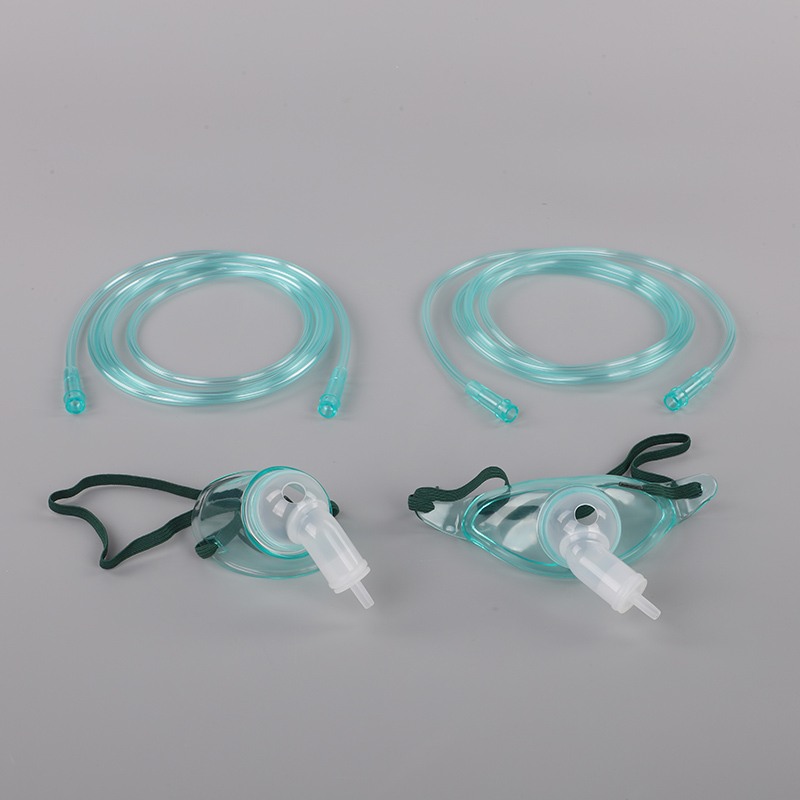-



Oxygen Therapy: Nasal Cannula or Oxygen Mask
Views: 666 Author: Site Editor Publish Time: 2024-07-01 Origin: Site

Oxygen therapy plays a pivotal role in treating various medical conditions that lead to decreased oxygen levels in the blood. It is a lifesaving treatment for patients suffering from chronic obstructive pulmonary disease (COPD), pneumonia, COVID-19, and other respiratory illnesses. The administration of supplemental oxygen can significantly improve the quality of life for individuals experiencing hypoxemia, ensuring their bodily functions remain optimal. The choice between a nasal cannula and an oxygen mask is crucial in the delivery of oxygen therapy, each with its unique advantages and scenarios of use.
Understanding Oxygen Therapy
Oxygen therapy is designed to supplement the body with additional oxygen, a necessity for metabolism and vital functions. This treatment is often prescribed when lung function is impaired, and the body cannot absorb enough oxygen on its own. The goal of oxygen therapy is to maintain adequate oxygen saturation levels in the blood, thereby alleviating symptoms associated with hypoxia and preventing organ damage.
Nasal Cannula: Comfort and Mobility
The nasal cannula is a lightweight, discreet option for oxygen therapy, preferred for its comfort and ease of use. It consists of a flexible tube with two small prongs that are inserted into the nostrils, allowing patients to eat, speak, and move about more freely compared to an oxygen mask. This method is suitable for patients requiring long-term oxygen therapy at lower flow rates.
Advantages of Using a Nasal Cannula
Patients often favor the nasal cannula for its simplicity and minimal interference with daily activities. It is less obtrusive and can be easily worn for extended periods. Additionally, the nasal cannula permits more natural breathing patterns and is generally well-tolerated by patients, even while sleeping.
Considerations for Nasal Cannula Use
While the nasal cannula offers several benefits, it is most effective at lower oxygen flow rates, typically up to 6 liters per minute. Higher flow rates can cause discomfort and dryness in the nasal passages, requiring additional humidification for patient comfort.
Oxygen Mask: Higher Oxygen Needs
For patients with more severe respiratory distress or those requiring higher concentrations of oxygen, an oxygen mask becomes the preferred method of delivery. Oxygen masks cover the nose and mouth, creating a seal that allows for the administration of higher oxygen levels compared to nasal cannulas.
Benefits of Using an Oxygen Mask
Oxygen masks are particularly beneficial in acute care settings where rapid oxygenation is necessary. They are capable of delivering a controlled oxygen concentration, which can be adjusted according to the patient’s needs. Oxygen masks are also essential in emergency situations or during procedures that require higher oxygen flow rates.
Key Considerations When Choosing an Oxygen Mask
While effective for short-term use or emergency situations, oxygen masks may be less comfortable for long-term treatment due to their design covering both the nose and mouth. This can interfere with communication and eating, requiring temporary removal of the mask for comfort and practicality.
Choosing Between Nasal Cannula and Oxygen Mask
The decision between using a nasal cannula or an oxygen mask for oxygen therapy largely depends on the patient's specific medical condition, oxygen needs, and comfort preferences. For long-term, low-flow oxygen therapy, the nasal cannula is often the best choice due to its comfort and convenience. Conversely, in situations requiring higher oxygen concentrations or in emergency settings, the oxygen mask provides a more effective solution. Healthcare providers play a crucial role in assessing patient needs and preferences to determine the most appropriate method of oxygen delivery.
In conclusion, both the nasal cannula and oxygen mask are vital tools in the administration of oxygen therapy. Understanding their differences and applications allows healthcare professionals to tailor treatments to individual patient needs, ensuring optimal care and patient satisfaction. As advancements continue in medical technology, the efficiency and comfort of oxygen delivery methods will only improve, enhancing the quality of life for those dependent on supplemental oxygen.
CONTACT US
NO.176, Gaoxin 5th Road, High-tech Industrial Park, Rizhao City276800, Shandong Province, China +86-13396234532 +86-13396234532Copyright © 2023 ZhenFu Group All Rights Reserved. Technology By leadong.com | Sitemap | Privacy Policy



















